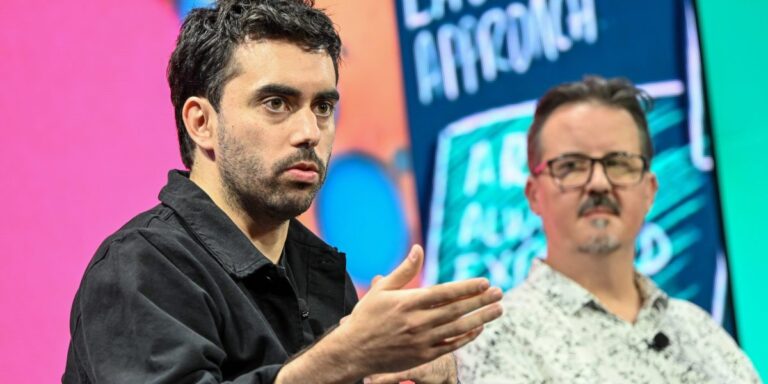Artists and filmmakers should embrace AI as a tool, rather than fear that it will take away their jobs.
That’s the message from Cristobal Valenzuela, co-founder and CEO of up-and-coming genAI startup Runway, and Jake Aust, a veteran TV producer who now serves as chief innovation officer at Agbo. Fortune The Brainstorm Tech Conference is taking place in Deer Valley, Utah, on Tuesday.
“These are great tools for great artists,” Valenzuela said, referring to the AI image- and video-creation models his company and others such as OpenAI have released.
He said he regrets that the debate about AI in the creative arts has become polarized. “It’s really hard to have a nuanced discussion,” Valenzuela said. “I think we’ve fallen into extremes: either this is going to destroy everything we know, or it’s the best thing we’ve ever seen. I feel like it’s neither. I feel like it’s somewhere in between.”
Runway is known for its AI models that generate images from text and videos from text. At Brainstorm Tech, Valenzuela showed a short video that highlighted how Runway’s AI models have advanced rapidly in just two years. The latest Gen 3 Alpha model can create one-minute cinematic video clips.
However, the company has been sued by artists for copyright infringement, alleging that it copied their work without permission and used it to train its AI models. Runway has been cautious about the data used to train its models, saying only that its latest, third-generation Alpha model is a proprietary combination of public and private data.
Aust said that anxieties about the impact of new technologies have rocked Hollywood since the industry’s early days. Fears about sound, color, television, digital production, computer-generated imagery, streaming and now the advent of AI have raised similarly existential concerns. “I think we’ve been in similar situations before, and it’s important to recognize that Hollywood exists because of technology,” he said. “I don’t think AI is going to kill Hollywood.”
Agbo, like other Hollywood production companies, uses generative AI models primarily to create early “visualizations” of a film: preliminary storyboards and concept images of what a movie might look like, he said. These are often used in the earliest stages of project development, when production companies are still trying to pitch their project idea to studios and producers, he said.
Valenzuela encouraged artists to try out AI tools to find their strengths and weaknesses and not dismiss them out of hand. He compared the current stage of AI to the early days of photography, when people called photos “mirrors of memory” because there was no word to describe the new art form, and said that if this technology is put to its best use, it will give birth to new art forms. “Try something that has no name and has never been seen before,” he said.
CEO Daily provides essential context for the news business leaders need to know. More than 125,000 readers trust CEO Daily every weekday morning for insight on and from the C-level. Subscribe now.


